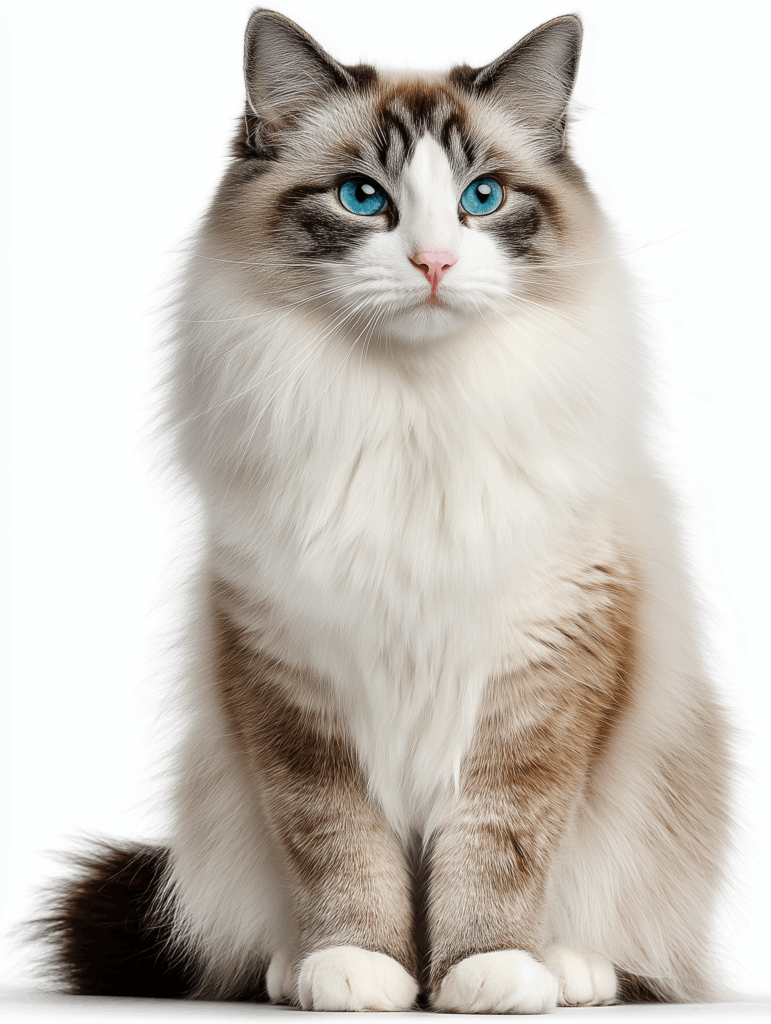
Ragdoll Cat Prices in 2025
The Ragdoll Cat prices for 2025 range between $3,500 and $5,000 on average for a healthy, quality Ragdoll Kitten.
Understanding the true cost of a Ragdoll cat means looking beyond the sticker price of a kitten. Responsible breeders invest in health testing, registration, vaccinations, socialization, and sometimes even importing cats from overseas to improve their bloodlines. All of those costs are reflected in what they charge. On the other hand, backyard breeders and scammers often undercut prices, but at the expense of quality, safety, and long-term health. The $800 “deal” on Craigslist may end up costing thousands in vet bills down the road.
This guide exists to help you cut through that confusion. It’s a foundational resource on Ragdoll cat prices, giving you the big picture while also pointing you to more detailed guides on specific types like Black Ragdolls or Himalayan Ragdoll Price.
Over the next sections, we’ll explore:
- The average cost of a Ragdoll cat in the United States and other countries.
- The factors that influence pricing, including pedigree, color, and breeder reputation.
- How prices differ between pet-quality and show-quality kittens.
- What’s usually included in the price of a kitten when buying from a reputable breeder.
- How Ragdoll prices compare to other luxury cat breeds like Persians and Maine Coons.
- The risks of buying too cheap and how to avoid scams.
- Practical tips for finding a Ragdoll at the right price point for your lifestyle.
By the end of this article, you’ll have a realistic understanding of Ragdoll cat prices in 2025 and the confidence to know when a breeder’s price is fair — and when to walk away.
👉 And if you’re already ready to welcome one of these gentle companions into your life, you can see available kittens here.
Average Ragdoll Cat Prices in 2025
When people begin researching Ragdoll cats, one of the first surprises is just how wide the price range can be. In one search, you might see kittens listed for $3,200 on a breeder’s website, $5,500 on another, and even $8,000+ from programs advertising “champion bloodlines.” At the same time, rescue organizations sometimes offer Ragdoll cats for a few hundred dollars. This creates confusion for new buyers: “What’s the real cost of a Ragdoll?”
The truth is that Ragdoll cat prices are not standardized. They depend on the breeder’s reputation, the kitten’s quality, the region you live in, and what’s included in the purchase price. Below we’ll break down the averages across categories and countries to give you a realistic picture.
U.S. Ragdoll Cat Price Ranges
In the United States, which has one of the largest markets for Ragdolls, expect these averages:
- Pet-quality kittens: $3,200 – $6,500
- Show-quality kittens: $4,500 – $8,000+
- Breeding-quality cats: $8,500 – $10,000 (only available from select breeders)
- Rescue/adoption: $150 – $600
- Retired breeder cats: $500 – $1,500
These prices reflect demand in 2025. Because Ragdolls are one of the top five most popular cat breeds in the U.S., reputable breeders rarely have trouble finding homes. Prices also vary by state — kittens on the East Coast and West Coast (especially New York, California, and Washington) often cost more than in rural states due to higher demand and higher cost of living.
Ragdoll Prices by State (Market 2025)
| Region / State | Average Pet Price | Show/Breeding Price | Notes |
|---|---|---|---|
| California | $3,500 – $4,500 | $5,000 – $6,500 | Strong luxury market, many high-end breeders |
| New York | $3,500 – $4,800 | $5,500 – $7,000 | NYC metro demand drives prices upward |
| Florida | $3,500 – $4,200 | $5,000 – $6,500 | Retiree market + wealthy buyers |
| Texas | $3,500 – $4,000 | $5,000 – $6,200 | Balanced supply, strong breeder presence |
| Pacific Northwest (Oregon, Washington) | $3,500 – $4,300 | $5,200 – $6,800 | Limited breeder pool, high demand |
| New England (MA, CT, RI, NH, VT, ME) | $3,800 – $4,800 | $5,500 – $7,000 | Fewer breeders, long waitlists |
| Colorado | $3,500 – $4,200 | $5,000 – $6,500 | Popular with affluent families |
| Midwest (Illinois, Ohio, Michigan, Indiana) | $3,500 – $3,800 | $5,000 – $6,200 | Prices trending upward, but still slightly lower |
| South (Georgia, Tennessee, Carolinas) | $3,500 – $4,000 | $5,000 – $6,200 | Growing demand |
| Alaska / Hawaii | $3,800 – $4,800 | $5,500 – $7,200 | Scarcity + shipping raises costs |
💡 These figures reflect the Ragdoll market in 2025 — breeders offering health-tested, registered kittens with full guarantees. Lower prices do exist, but they typically signal backyard breeders or scams.
International Price Comparisons
United Kingdom
Ragdoll kittens in the UK typically cost £900 – £2,000 for pet-quality and £2,000 – £4,000+ for show-quality. The UK has strict breeding standards through the GCCF, so buyers often pay more for health-tested lines.
Australia
Ragdoll cats are extremely popular in Australia, where demand has steadily increased. Prices usually run AUD $1,500 – $3,500, with show-quality kittens often pushing closer to $4,000–$5,000. Transport costs (since many breeders are spread across large distances) also drive up final prices.
European Union
- In continental Europe, prices vary country by country.
- In Western Europe (Germany, France, Netherlands), Ragdolls often sell for €1,200 – €2,500 for pet quality.
- In Eastern Europe, kittens can sometimes be found for lower prices, €600 – €1,200, though these programs may not always follow the same strict breeding standards.
Pet vs. Show vs. Breeding Quality
Not every Ragdoll kitten from a litter is priced the same. Breeders typically classify kittens into three categories:
- Pet-quality: The most affordable option. These kittens may have slight deviations from the breed standard (markings not perfectly symmetrical, or smaller bone structure). They are just as healthy and affectionate but sold with a spay/neuter agreement.
- Show-quality: These kittens meet or exceed breed standards for appearance, coat, and size. They often come from champion bloodlines and can compete in CFA or TICA cat shows. This is why their price can be double that of pet-quality.
- Breeding-quality: Reserved for established catteries. Prices are highest because these cats represent future generations of a program. Many breeders will not sell kittens with breeding rights to first-time buyers.
Adoption and Rescue Prices
Not everyone needs or wants a show-quality kitten. Some families are perfectly happy giving a home to an older cat or a Ragdoll mix. Breed-specific rescues and shelters sometimes receive surrendered cats. In these cases, adoption fees typically run between $150 and $600, covering vaccinations and spay/neuter. While it’s rare to find a purebred kitten this way, it’s a rewarding path for those who prefer adoption.
Hidden Costs of Ragdoll Cat Ownership
The purchase price is just the beginning. Future owners need to budget for ongoing expenses that quickly add up:
- Food: Ragdolls are large cats, often weighing 12–20 pounds. Expect $50–$100/month for quality cat food.
- Veterinary Care: Annual exams and vaccinations cost $200–$400. Emergencies can cost thousands.
- Spay/Neuter: If not included, this adds $200–$500.
- Grooming: While Ragdolls don’t mat as badly as Persians, professional grooming ($50–$100 per session) may still be needed occasionally.
- Supplies: Litter boxes, scratching posts, carriers, and toys — usually $200+ upfront.
- Insurance: Pet insurance plans for Ragdolls typically run $30–$60/month.
When you add it up, the first-year cost of Ragdoll ownership often exceeds $3,000–$4,000 even for a pet-quality kitten. That’s why choosing a healthy, well-bred cat is a wise investment — cutting corners early can mean higher bills later.
Quick Cost Comparison Table
| Category | Price Range |
|---|---|
| Pet-quality kitten | $1,200 – $2,500 |
| Show-quality kitten | $2,500 – $5,000+ |
| Breeding-quality cat | $3,500 – $6,000 |
| Retired breeder | $500 – $1,000 |
| Rescue/adoption | $150 – $600 |
| First-year ownership costs | $3,000 – $4,000+ |
Summary
On average, a Ragdoll kitten in the U.S. will cost between $1,200 and $2,500 for pet-quality and $2,500 to $5,000+ for show-quality. International buyers should expect similar ranges, adjusted for local currency and demand. But remember: the upfront purchase price is just one part of the equation. Ragdolls are luxury cats not only to buy, but also to own and maintain. Looking for a Ragdoll Kitten For Sale Near You?
What Affects Ragdoll Cat Prices?
One of the most confusing parts of buying a Ragdoll cat is figuring out why prices are so different from one breeder to the next. You may see one cattery listing kittens for $1,500, while another charges $3,500 for what looks like a very similar cat. Is the second breeder just charging more because they can? Usually not. The truth is that Ragdoll cat prices are shaped by a combination of factors, from breeder ethics to pedigree to simple supply and demand.
Let’s explore the five biggest factors that influence what you’ll pay for a Ragdoll kitten in 2025.
1. Ragdoll Cat Breeder Reputation and Standards
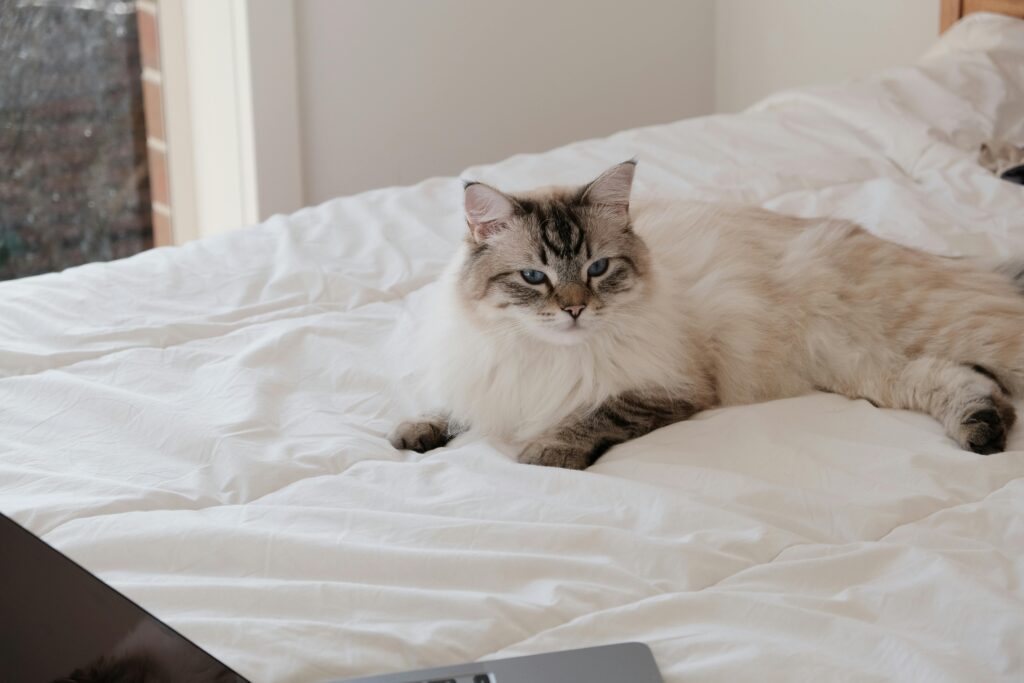
The most significant factor in pricing is the breeder’s reputation. A well-established breeder with a track record of healthy, long-lived cats will always command higher prices than someone breeding casually. Why? Because they invest far more time, money, and expertise into their program.
A reputable breeder:
- Conducts genetic testing for conditions like HCM (Hypertrophic Cardiomyopathy) and PKD (Polycystic Kidney Disease).
- Performs routine veterinary checks on breeding cats.
- Raises kittens in a home environment for proper socialization.
- Provides written health guarantees and contracts.
- Registers kittens with recognized associations (CFA, TICA, GCCF, etc.).
Each of these steps costs money, but they protect the buyer from future problems. By contrast, a backyard breeder or kitten mill may cut corners, offering cheaper kittens with little to no testing. Those savings often vanish quickly when vet bills pile up.
It’s no surprise, then, that Ragdoll kittens from reputable breeders cost $2,000–$5,000, while less careful breeders may list kittens for under $1,000.
2. Ragdoll Pedigree and Bloodlines
Not all Ragdolls are equal in terms of lineage. Some breeders spend years (and thousands of dollars) importing cats from Europe, Australia, or Asia to strengthen their bloodlines. Others actively compete in cat shows, proving that their cats meet breed standards and excel in temperament.
Pedigree matters because it signals predictability. A kitten from champion bloodlines is more likely to grow into a cat with the Ragdoll’s trademark large frame, luxurious coat, and laid-back nature. For families who want a show-quality companion, or breeders seeking to improve their own programs, pedigree is worth the premium.
- Pet-quality kittens from good lines: $1,500 – $2,500
- Show-quality kittens with champion parents: $3,000 – $5,000+
- Breeding-quality cats with exclusive pedigrees: $4,000 – $6,000
When you pay more for a kitten with an exceptional pedigree, you’re investing in generations of careful selection.
3. Ragdoll Color and Pattern
Ragdoll colors and patterns play a major role in pricing. While all Ragdolls share the same general look — silky coats, blue eyes, and large bodies — certain variations are rarer and therefore more expensive.
- Seal and blue point/mitted Ragdolls are the most common and usually the most affordable.
- Chocolate and lilac Ragdolls are less common, so breeders often price them higher.
- Mink Ragdolls, which have a unique coat texture and deeper eye color, can fetch $3,000–$4,000.
- Rare variants like Black Ragdolls or Himalayan Ragdolls draw niche interest, creating demand that pushes up prices.
For example, a pet-quality seal mitted kitten might cost $1,500, while a lilac mink kitten could cost $3,500 from the same breeder. The genetic rarity of certain colors directly affects the market.
👉 This is where your sub-posts on each color are powerful: they give buyers a clear explanation of what makes each variation unique — and why the price difference exists.
4. Gender and Breeding Rights
Gender can also influence price, though less dramatically than pedigree or color. In general:
- Male pet-quality kittens are often slightly less expensive because demand is balanced.
- Female breeding-quality cats are usually the most expensive, since they represent future litters.
Most reputable breeders sell kittens as pets only, with spay/neuter agreements. If breeding rights are available, the price can double. For example, a $2,500 pet kitten might cost $5,000 if sold intact for breeding purposes. This helps breeders protect their lines and prevent irresponsible breeding.
5. Location and Demand
Finally, location plays a bigger role than many realize. Ragdolls are extremely popular in North America, the UK, and Australia, but less common in certain regions of Europe and Asia. Prices naturally rise where demand exceeds supply.
- High-demand urban areas (New York, Los Angeles, London, Sydney): $2,500–$4,500 for pet-quality kittens.
- Rural or less competitive markets (Midwest U.S., smaller EU countries): $1,200–$2,000 for pet-quality kittens.
- Regions with fewer breeders often see higher shipping costs if buyers need to import a kitten.
For some families, traveling or importing a kitten makes sense if it means getting the health and temperament guarantees that come with a reputable breeder.
Why These Factors Matter
Each of these factors — breeder reputation, pedigree, color, gender, and geography — shapes the price of a Ragdoll cat. Understanding them helps buyers avoid two common mistakes:
- Assuming a high price is always a scam. Sometimes, it’s simply the reality of a breeder who invests heavily in health testing and shows.
- Choosing the cheapest option. While tempting, this often leads to heartbreak when health or temperament problems arise.
Ultimately, Ragdoll cats are a luxury breed, and their pricing reflects that. But knowing the factors that drive those prices means you can make an informed decision, balancing your budget with your expectations.
Ragdoll Cat Price Variations by Color
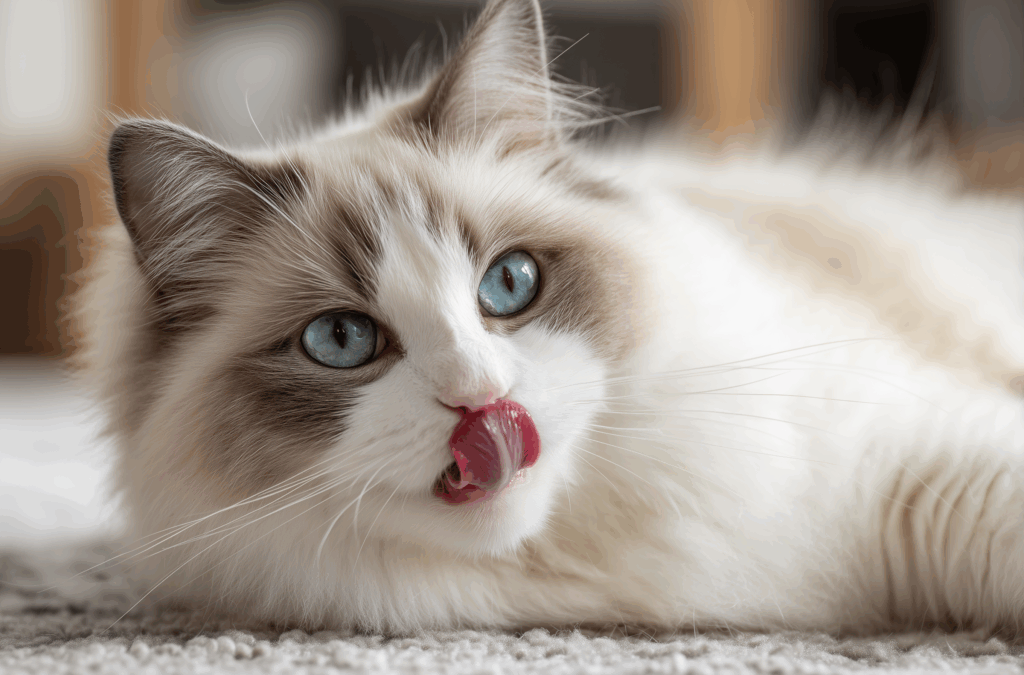
One of the most interesting — and sometimes confusing — parts of buying a Ragdoll is how much color and pattern affect price. While all Ragdolls share the same sweet temperament and luxurious coats, some colors are more common, while others are so rare that breeders can only produce a few each year. That rarity often comes with a higher price tag.
Below, we’ll break down the most popular and rare Ragdoll colors, what makes each one special, and the average price ranges you can expect in 2025.
Seal Ragdoll Price
- Price Range: $3,200 – $5,000
- Overview: Seal is the most common Ragdoll color and also one of the most recognizable. These cats have dark brown (seal) points on their face, ears, legs, and tail, paired with a lighter cream or beige body. Seal Ragdolls are in high demand because they’re classic examples of the breed standard.
- Why Price Is Moderate: Because seal is relatively easy to produce genetically, the price is on the lower end compared to rarer colors. That doesn’t make them less desirable — in fact, most families seeking a “typical Ragdoll” choose seal.
Blue Ragdoll Price
- Price Range: $3,500 – $6,500
- Overview: Blue Ragdolls have slate-gray points instead of seal-brown. The cool, silvery tones make them stand out, and they often photograph beautifully. Blue is one of the top two most requested Ragdoll colors (alongside seal).
- Why Price Is Slightly Higher: While not rare, blue is considered especially elegant. Breeders sometimes charge more for kittens with exceptionally symmetrical markings or deep, consistent blue-gray coloring.
Chocolate and Lilac Ragdoll Price
- Price Range: $4,000 – $6,500
- Overview: Chocolate Ragdolls have milk-chocolate points, while lilacs are the dilute form, appearing in a softer, pinkish-gray. These colors are less common than seal or blue and require careful genetic pairing to produce consistently.
- Why Price Is Higher: Their relative rarity makes them a breeder challenge, and families often wait longer for chocolate or lilac kittens. Prices rise accordingly.
Mink Ragdoll Price
- Price Range: $3,000 – $5,000
- Overview: Mink Ragdolls aren’t technically a different breed but rather a variation with a unique coat texture and eye color. Instead of the bright blue eyes of traditional Ragdolls, minks may have aqua or green eyes. Their coats are denser, silkier, and often darker overall.
- Why Price Is Higher: Mink Ragdolls are still rare in many breeding programs. Their striking looks, unusual eye colors, and luxurious coats make them highly desirable, driving prices higher.
Himalayan Ragdoll Price
- Price Range: $2,800 – $3,500
- Overview: Sometimes called “doll-faced Himalayans” when crossed historically, Himalayan Ragdolls carry similar colorpoint genes. They usually display strong point contrast with creamy coats. While controversial in strict breed circles, they are adored by pet families who love their unique look.
- Why Price Is Mid-High: Their rarity combined with niche appeal keeps their price higher than standard seals or blues.
Black Ragdoll Price
- Price Range: $1,500 – $3,000
- Overview: Black Ragdolls are not recognized in the traditional Ragdoll breed standard because the classic Ragdoll is always a pointed cat with blue eyes. However, black Ragdolls do exist in some programs as “mismarks” or outcross variations. They often resemble long-haired domestic cats with Ragdoll temperaments.
- Why Price Is Variable: Some breeders price them lower since they cannot be shown, while others price them higher due to rarity and the unique appeal for families who want a “Ragdoll personality in a black coat.”
Bicolor and Mitted Patterns
- Price Range: $4,500 – $6,500
- Overview: Beyond colors, patterns also affect price. Ragdolls come in pointed, mitted, and bicolor patterns. Bicolors (with their trademark inverted “V” on the face) are especially popular. Mitted cats (with white “mittens” on their paws) are equally charming.
- Why Price Can Climb: Breeders often charge more for kittens with perfect symmetrical markings, especially in show-quality lines.
Cinnamon Ragdolls are a rare color pattern and you can learn about them here.
Summary Table: Ragdoll Cat Prices by Color (2025)
| Color/Pattern | Average Price Range | Notes |
|---|---|---|
| Seal | $3,200 – $5,000 | Most common, classic Ragdoll look |
| Blue | $3,500 – $6,500 | Cool gray tones, very popular |
| Chocolate/Lilac | $4,000 – $6,500 | Less common, breeder challenge |
| Mink | $3,000 – $5,000 | Unique coat texture, aqua/green eyes |
| Himalayan | $2,800 – $3,500 | Niche appeal, striking contrast |
| Black | $1,500 – $3,000 | Rare, not standard but loved |
| Bicolor/Mitted | $4,500 – $6,500 | Symmetry raises value |
Final Thoughts on Color Pricing
Color doesn’t change a Ragdoll’s affectionate personality, but it does influence ragdoll cat prices. Families seeking a more affordable kitten often find better availability in seal and blue. Those looking for something unique — mink, lilac, or black — should expect to pay more and sometimes wait longer on a breeder’s list.
Ragdoll Cat Prices vs. Other Breeds
When families begin researching purebred cats, they often consider several breeds at once. Maine Coons, Persians, British Shorthairs, and even exotic hybrids like Savannahs all appear on the short list of “dream cats.” Each breed has its own reputation, personality, and following — and each comes with a price tag that reflects both popularity and rarity.
So where do Ragdolls sit on this spectrum? Let’s compare.
Maine Coon Cats
- Price Range: $3,500 – $8,000
- Overview: Known as the “gentle giants” of the cat world, Maine Coons are the largest domestic breed, with males often weighing 18–25 pounds. Their size, playful nature, and rugged looks make them incredibly popular in the U.S. and Europe.
- Why They Cost Less (Sometimes): Despite their popularity, Maine Coons tend to have more breeders worldwide than Ragdolls, which stabilizes prices. However, rare colors or top show lines can rival Ragdoll prices.
- Comparison to Ragdolls: Ragdolls and Maine Coons appeal to similar buyers: families wanting large, affectionate, dog-like cats. Maine Coons are more active and playful, while Ragdolls are calmer and more relaxed. In terms of price, both are in the upper mid-range, though Ragdolls often carry a slightly higher price tag for rare colors.
Persian Cats
- Price Range: $1,500 – $5,000
- Overview: Persians are famous for their long, flowing coats and flat faces. They’ve been a symbol of luxury for decades, adored for their quiet, gentle personalities.
- Why They Cost More: Persians require intensive grooming and have more health risks tied to their facial structure, which means reputable breeders must invest heavily in care and screening. Show-quality Persians, with perfect coats and features, command some of the highest prices in the cat world.
- Comparison to Ragdolls: Both breeds attract luxury buyers who want a glamorous, affectionate cat. However, Ragdolls are easier to care for, since their coats don’t mat as severely and they are generally healthier. In terms of price, Persians and Ragdolls overlap, but Ragdolls are often more family-friendly due to lower maintenance needs.
British Shorthair Cats
- Price Range: $1,800 – $4,000
- Overview: With their plush teddy-bear coats and calm, dignified personalities, British Shorthairs are especially popular in Europe and are gaining traction in the U.S. They are sturdy, medium-to-large cats that adapt well to apartment living.
- Why They Cost More: Their popularity combined with limited availability in the U.S. drives prices upward. Breeders in the UK and Europe often have waiting lists, especially for rare colors like golden or lilac.
- Comparison to Ragdolls: Ragdolls and British Shorthairs both appeal to families who want calm, affectionate companions. The difference is that Ragdolls are typically more social and attention-seeking, while British Shorthairs are independent. Pricing is similar, but Ragdolls are slightly more expensive in the U.S. due to higher demand and lower supply.
Savannah Cats
- Price Range: $4,000 – $20,000+
- Overview: Savannahs are hybrids, created by crossing domestic cats with the African serval. Their tall, lean bodies and spotted coats give them a wild, exotic look. Generational differences (F1, F2, etc.) play a huge role in price: the closer to the serval, the higher the cost.
- Why They Cost So Much: Breeding Savannahs requires specialized facilities, and demand from buyers seeking a truly exotic pet keeps prices extremely high. F1 and F2 Savannahs often cost more than a luxury car.
- Comparison to Ragdolls: Ragdolls sit in a completely different category. They are pure domestic cats bred for gentleness, while Savannahs are energetic, high-maintenance hybrids. Pricewise, Savannahs dwarf Ragdolls — making Ragdolls look “affordable” by comparison. Families who want luxury without unpredictability often choose Ragdolls over hybrids.
Summary: Where Ragdolls Fit
Ragdolls occupy the “luxury but attainable” niche in the cat world. They are more expensive than average cats and most common breeds, but not as astronomically priced as hybrids. Compared to Maine Coons and British Shorthairs, they’re slightly higher in price, especially for rare colors. Compared to Persians, they’re about equal but easier to maintain. And compared to Savannahs, they are downright budget-friendly.
For many buyers, this balance explains the Ragdoll’s enduring popularity. They offer beauty, size, and temperament in a package that feels indulgent but not unreachable. Families who might balk at a $15,000 hybrid see $3,500–$6,000 for a Ragdoll as a fair investment in a once-in-a-lifetime pet. Here is the Complete Guide to Ragdoll Cats. for more information about the Ragdoll cat breed.
Where to Buy Ragdoll Cats
Once you know what Ragdoll cats cost, the next question is: Where should I buy one? The answer to this question often makes the difference between a joyful, lifelong companion and a stressful, expensive mistake. Not all sources for Ragdoll kittens are equal. Some provide health-tested, well-socialized cats raised with love, while others cut corners — or worse, scam buyers entirely.
Let’s explore the three main paths: reputable breeders, rescues/adoptions, and less reliable sellers.
1. Reputable Breeders
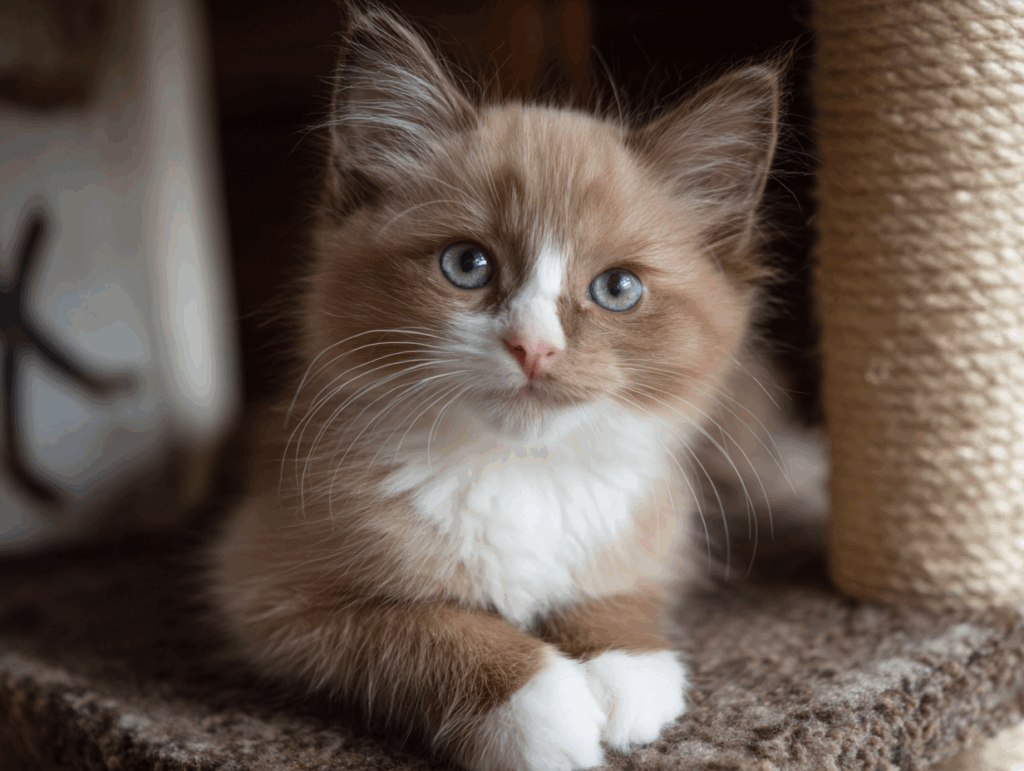
Buying from a reputable breeder is the best option for families who want predictability, peace of mind, and long-term support. A well-run cattery invests years into developing healthy, well-socialized kittens and backs up their work with documentation.
What to Expect from a Reputable Breeder:
- Health Testing: Parents are tested for HCM and PKD, and kittens receive vet checks, vaccinations, and deworming.
- Contracts and Guarantees: Buyers receive written agreements, health guarantees (often 1–2 years against genetic conditions), and spay/neuter clauses for pet kittens.
- Registration: Kittens are registered with major associations such as CFA (Cat Fanciers’ Association) or TICA (The International Cat Association).
- Transparency: Good breeders welcome questions and often provide photo or video updates while kittens grow.
- Socialization: Kittens are raised in a home environment, not cages, which means they arrive confident and people-friendly.
Price Expectation:
$3,500 – $5,000+, depending on quality (pet vs show vs breeding). While this is the most expensive route, it also provides the most value in terms of support, predictability, and lifelong health.
2. Rescue and Adoption
For those who prefer adoption or want a lower-cost option, rescues can sometimes be a surprising source of Ragdolls. Purebred Ragdolls are occasionally surrendered due to family changes, allergies, or mismatches in expectations.
What to Expect from a Rescue:
- Adoption Fees: Usually $150 – $600, which covers spay/neuter, vaccinations, and microchipping.
- Age Range: Rescues usually have adult cats rather than kittens, though young cats occasionally become available.
- Limited Availability: Finding a purebred Ragdoll through rescue requires patience and luck — demand is high and supply is low.
- Unknown Background: Some rescue cats may lack full health or pedigree records.
Where to Look:
- Ragdoll-specific rescues (such as Ragdoll Rescue USA)
- Petfinder or Adopt-a-Pet
- Local shelters that occasionally receive surrendered purebreds
For families open to adopting an older cat, rescues are rewarding. While you may not get a show-quality kitten, you’ll give a Ragdoll in need a second chance at life.
3. Pet Stores and Backyard Breeders
Pet stores and backyard breeders are common sources of kittens, but they come with the highest risks. These sellers often advertise “Ragdoll-type” kittens for $500–$1,200, far below market average. At first glance, the ragdoll cat price seems attractive. But the reality is often far less appealing.
Common Problems with Backyard Breeders and Pet Stores:
- Health Issues: No genetic testing, minimal vet care, and higher rates of disease.
- Poor Socialization: Kittens raised in cages or barns may arrive fearful, shy, or aggressive.
- Scams: Some sellers use stolen photos, ask for deposits, and disappear without delivering a kitten.
- No Support: Once money changes hands, the buyer is on their own.
While it is possible to find a healthy cat this way, the risks are high — and the long-term costs in vet bills and behavior training often outweigh the initial savings.
How to Spot a Red Flag Seller
Whether online or in person, watch out for these signs of trouble:
- Extremely low ragdoll cat prices compared to average Ragdoll costs
- Refusal to answer questions about health testing or pedigrees
- No contract, health guarantee, or registration papers
- Pressure to pay quickly via wire transfer or gift cards
- Reluctance to provide recent photos or videos of the kitten
A good rule of thumb: If it sounds too good to be true, it usually is.
Which Source Is Best for You?
- If you want a predictable experience with full documentation, choose a reputable breeder.
- If you value giving a cat in need a home, adoption is an excellent path.
- If you’re tempted by low prices from pet stores or backyard breeders, proceed with extreme caution — the risks are high.
Ultimately, where you buy a Ragdoll cat matters just as much as how much you pay. Spending more upfront with a trusted breeder or rescue saves money and heartache later.
The Most Common Ragdoll Cat Scams
1. The “Too Good to Be True” Price
Scammers frequently advertise Ragdoll kittens for $400–$800, well below the market average. The listing often includes professional-looking photos stolen from legitimate breeders’ websites. Buyers who jump at the deal usually lose their deposit (or full payment) and never hear from the seller again.
2. Fake Transportation Fees
Some scammers pretend to arrange shipping through a “pet transport company” that doesn’t exist. They may claim the kitten is already on its way, but additional insurance, climate-controlled crates, or “vaccination upgrades” must be paid before delivery. Each time you send money, another fee appears — until you realize there is no kitten.
3. Overuse of Stock Photos
Scammers often recycle the same kitten pictures across multiple ads and websites. If you perform a reverse image search, you may find the same photo being used by sellers across different states or even countries.
4. Purebred “Ragdoll Mixes”
Backyard breeders sometimes advertise domestic longhairs or Ragdoll crosses as purebreds, asking $600–$1,000. These cats may look similar, but they lack the pedigree, temperament, and health testing of true Ragdolls. Buyers end up with cats that don’t match what they were promised.
Red Flags to Watch Out For
- Unrealistic Pricing: Any price far below the $1,200–$2,500 average for pet-quality Ragdolls should raise suspicion.
- No Proof of Health Testing: Legitimate breeders are proud to show HCM/PKD test results, vaccination records, and vet reports.
- Vague Communication: Scammers often avoid phone calls or video chats, insisting on text or email only.
- Pressure Tactics: Requests for quick payment, “before someone else grabs the kitten,” are classic scam behavior.
- Unclear Location: If the seller refuses to provide an address or insists they can’t allow visits, be cautious.
Safe Payment Practices
How you pay is just as important as who you pay. Protect yourself by using methods that leave a paper trail and offer recourse if things go wrong.
- Credit Card or PayPal Goods & Services: These offer buyer protection if the kitten isn’t delivered.
- Avoid Wire Transfers and Gift Cards: Scammers love these because they’re impossible to trace or reverse.
- Deposit Only with Proof: A deposit is normal, but make sure you have a signed contract and recent photos/videos of the kitten first.
- Consider Escrow Services: For high-value purchases (show or breeding quality kittens), escrow ensures funds are released only when the kitten is safely delivered.
How to Verify a Legitimate Breeder
- Check Registration: Look for CFA, TICA, or GCCF registration. Breeders who participate in official registries are more trustworthy.
- Search for Reviews: Look beyond the breeder’s website. Independent reviews on forums or social media carry more weight.
- Ask for References: Good breeders can connect you with past buyers willing to share their experience.
- Request a Video Call: Seeing the kitten live on camera with its mother eliminates most scam possibilities.
- Visit in Person (If Possible): Nothing replaces meeting the breeder face-to-face. Even one home visit reveals volumes about how the cats are raised.
Why People Fall for Scams
It’s easy to underestimate how persuasive scammers can be. They use emotional pressure — reminding buyers of how adorable the kitten looks, or suggesting the kitten will “go fast” if you don’t act quickly. For families desperate to bring home a Ragdoll, these tactics can override caution.
Remember: a reputable breeder will never pressure you. They often have waiting lists, not clearance sales. If a deal feels rushed or off-balance, step back and reassess.
Protect Yourself
Scams thrive because people focus on the kitten’s photo, not the seller’s behavior. Always evaluate the source first. A trustworthy breeder has nothing to hide — they’ll share documents, photos, and even FaceTime sessions with your future kitten.
Spending $4,000–$6,000 on a healthy, well-bred Ragdoll may feel expensive compared to a $500 online “deal,” but in reality, it’s the cheaper option.
- With a scam, you could lose money entirely.
- With a poorly bred kitten, you could face thousands in medical bills.
- With a reputable breeder, you get what you pay for: a healthy, affectionate companion who will bring joy for 12–15 years.
What’s Included in the Price of a Ragdoll Cat (and Why They’re Worth It)
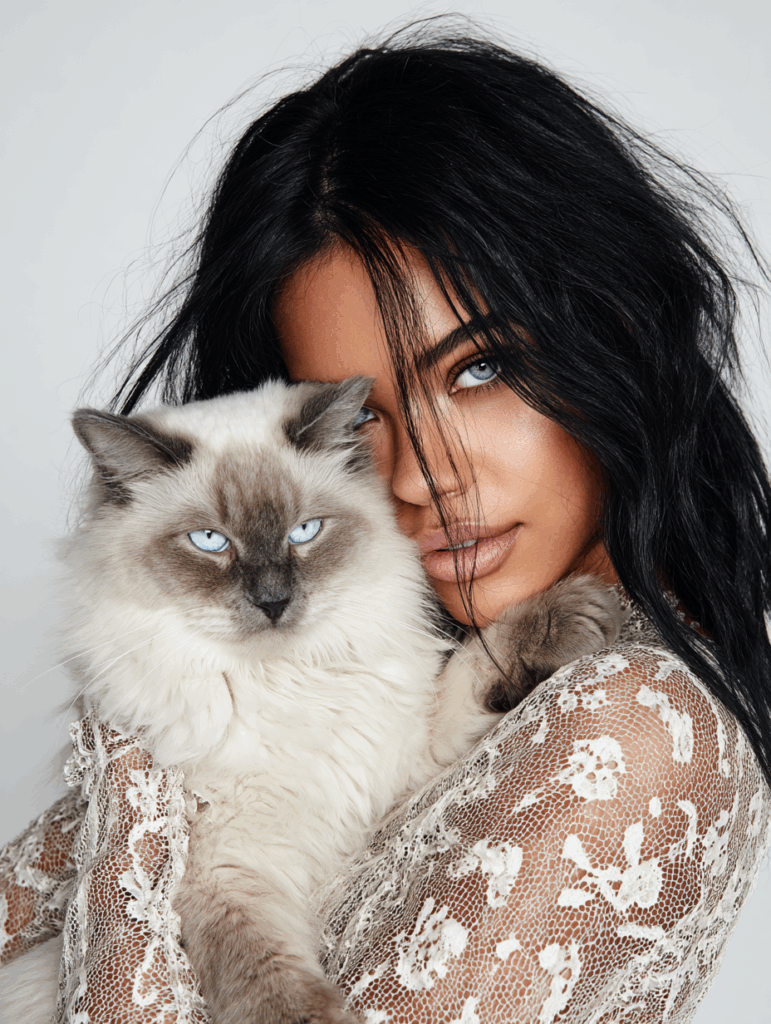
When you first see a price tag of $2,000–$3,500 for a Ragdoll kitten, it’s natural to wonder if it’s really justified. After all, that’s the cost of a high-end laptop or a week’s vacation. But unlike impulse purchases, a Ragdoll is a 12–15 year investment in a companion who becomes part of your family. What you’re paying for isn’t just the kitten — it’s the care, security, and peace of mind that comes from buying through a reputable breeder.
1. Veterinary Care and Health Testing
Every reputable breeder invests heavily in veterinary care long before a kitten goes home. Parents are screened for hereditary conditions like HCM and PKD, and kittens receive early check-ups, vaccinations, and parasite prevention. These expenses easily add up to hundreds of dollars per kitten — costs already covered in the purchase price.
If you were to buy a cheaper kitten from a backyard breeder, you might face vet bills for untreated parasites, respiratory infections, or congenital conditions that were never tested for. That $800 “deal” can quickly balloon into thousands of dollars in emergency care.
2. Spay/Neuter and Microchipping
Most pet-quality Ragdoll kittens are sold already spayed or neutered, or with a strict spay/neuter contract. Surgery typically costs $200–$500 at a veterinary clinic. Many breeders also include microchipping, giving your kitten permanent identification should they ever be lost. Both services are commonly bundled into the adoption price.
3. Registration and Pedigree Papers
Reputable breeders register kittens with associations such as CFA (Cat Fanciers’ Association) or TICA (The International Cat Association). This provides proof of lineage and ensures you are receiving a true Ragdoll, not a lookalike. For buyers considering show or breeding quality kittens, pedigree papers are essential. Even for pet buyers, they add credibility and peace of mind.
4. Starter Kit and Transition Support
Most breeders don’t just hand over a kitten. They provide a starter kit, which may include:
- A small bag of the food the kitten has been eating
- A toy or blanket that smells like home (reduces stress during transition)
- Litter samples or care sheets
- Written instructions on feeding, grooming, and integration
- Insurance for the transition period going home.
These little extras help kittens adjust smoothly and prevent early stress-related health issues.
5. Breeder Support and Guarantees
The intangible part of a Ragdoll kitten’s price is support. A good breeder becomes a lifelong resource, available for advice on diet, behavior, or health. Many offer health guarantees (covering genetic conditions for 1–2 years), which can save thousands in unexpected costs. This ongoing support has real value — something you don’t get from backyard breeders or pet stores.
Why Ragdolls Are Worth the Price
Beyond the practical inclusions, Ragdolls are worth their price because of what they offer families:
- Temperament: They are famously gentle, tolerant, and affectionate, often compared to dogs in their loyalty.
- Longevity: With proper care, Ragdolls live 12–15 years, making the cost more affordable when spread over a decade of companionship.
- Luxury Appeal: Ragdolls are a luxury breed. Their beauty, size, and personality make them stand out in any household.
- Predictability: Unlike adopting a random mix, buying from a breeder ensures you know what you’re getting — a true Ragdoll in both looks and temperament.
Think of a Ragdoll as a luxury investment. Just as people spend thousands on a well-bred horse or a show dog, cat enthusiasts invest in Ragdolls because they combine beauty, personality, and pedigree in one package.
Final Thoughts on Ragdoll Cat Prices
Ragdolls are more than just beautiful cats — they are an investment in companionship, predictability, and peace of mind. With prices starting around $3,500 for pet-quality kittens and climbing to $7,000 or more for show and breeding cats, Ragdolls sit firmly in the luxury tier of purebred cats. Their cost reflects the health testing, care, and dedication that reputable breeders put into every kitten.
When comparing options, always remember:
- Lower prices often mean higher risks — from scams to long-term health issues.
- Reputable breeders include veterinary care, registration, guarantees, and lifelong support in their pricing.
- Adoption and retired breeders can offer budget-friendly alternatives, but availability is limited.
- Rare colors, perfect markings, and champion pedigrees will always command premium prices.
Ultimately, Ragdolls are worth the investment because they bring 12–15 years of affection, gentleness, and beauty into their families’ lives. For many owners, the joy of living with a Ragdoll far outweighs the upfront cost.
🐾 Find Your Own Ragdoll Kitten
Ready to adopt a Ragdoll kitten? See our available kittens or explore our in-depth guides:
- Black Ragdoll Cat Prices
- Himalayan Ragdoll Cat Prices
- Cinnamon Ragdoll Cat Prices
- Where to Buy a Ragdoll Kitten Without Getting Scammed
- How Much Are Ragdoll Cats
Your perfect Ragdoll companion could be just one click away.
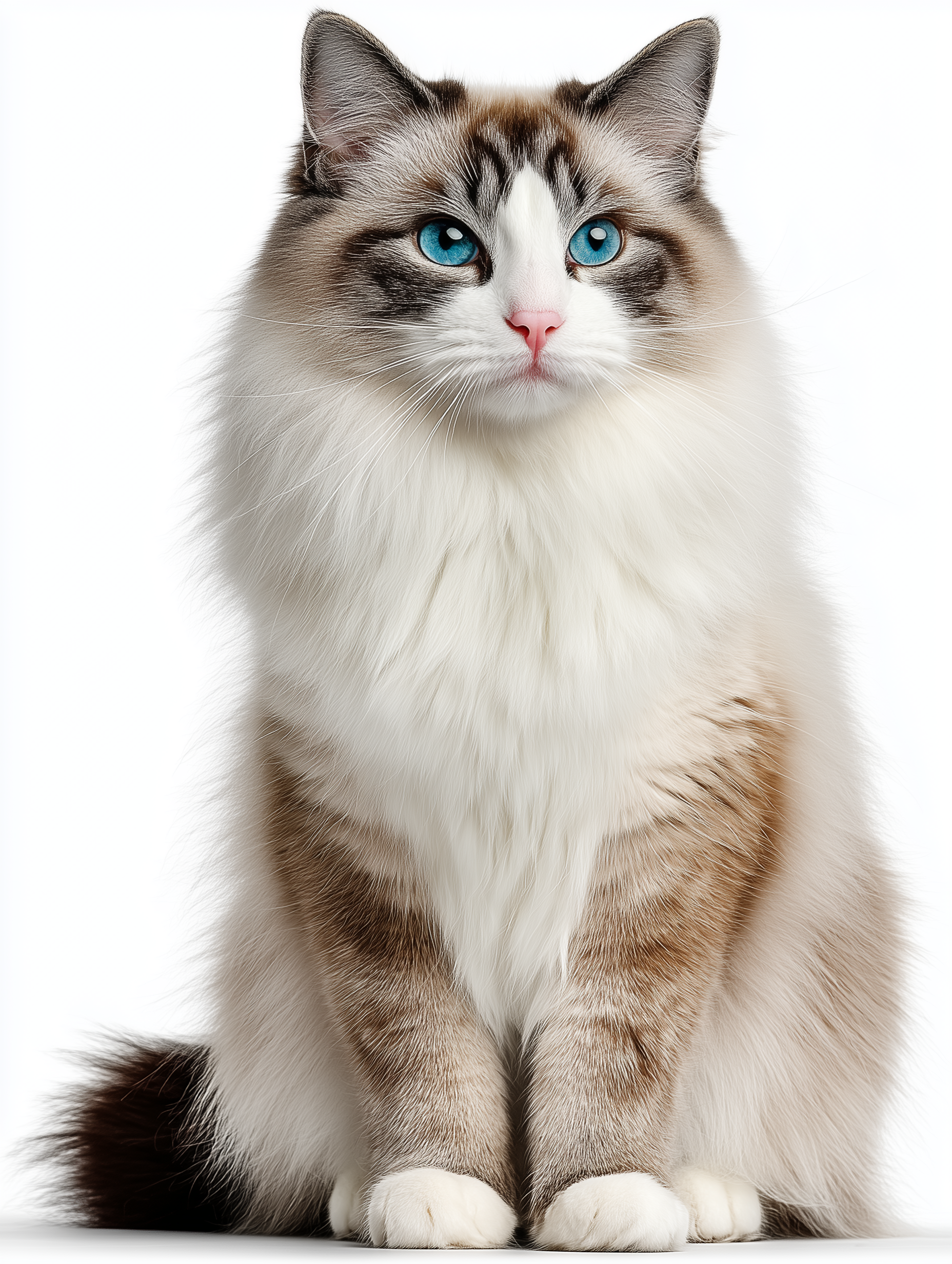
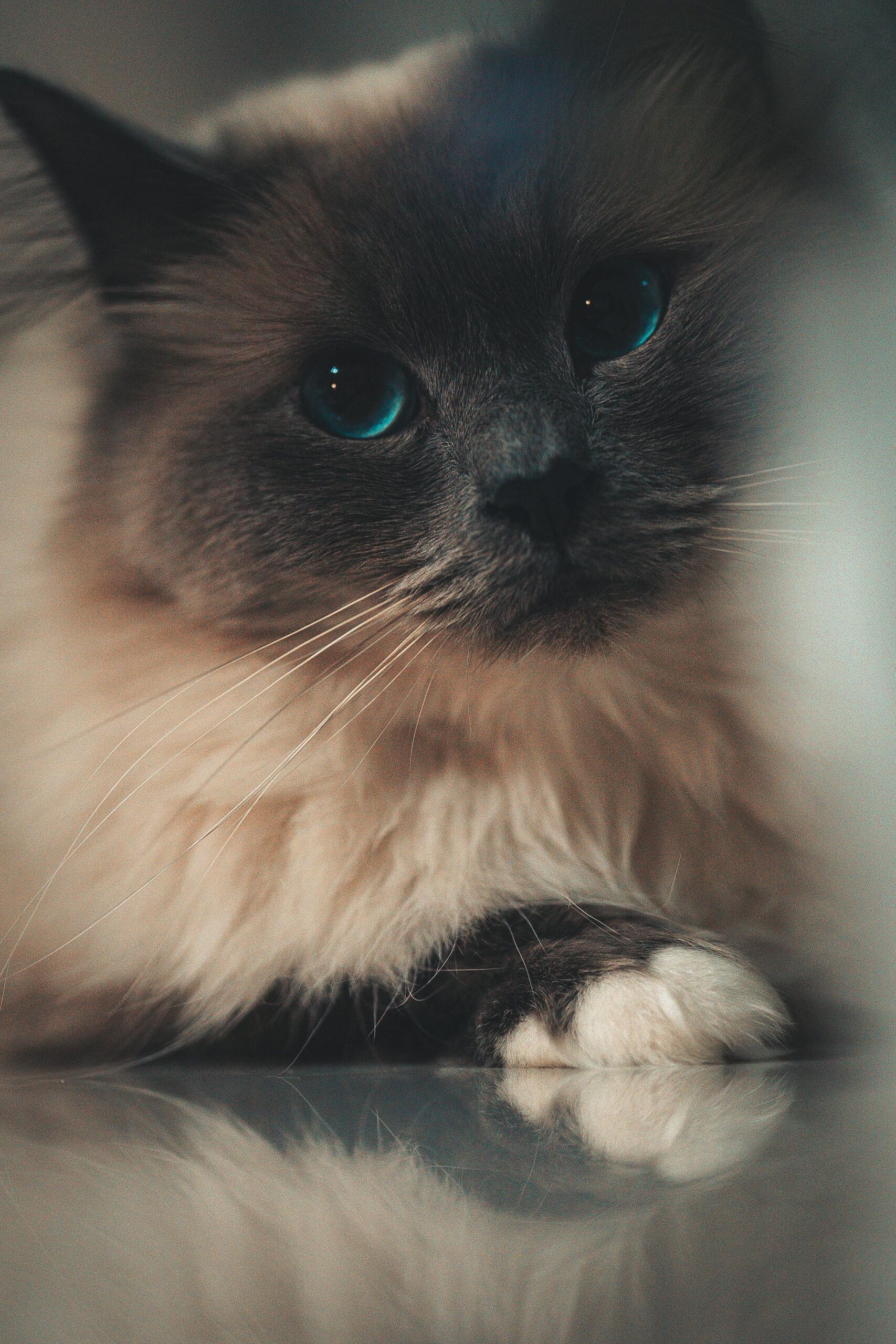
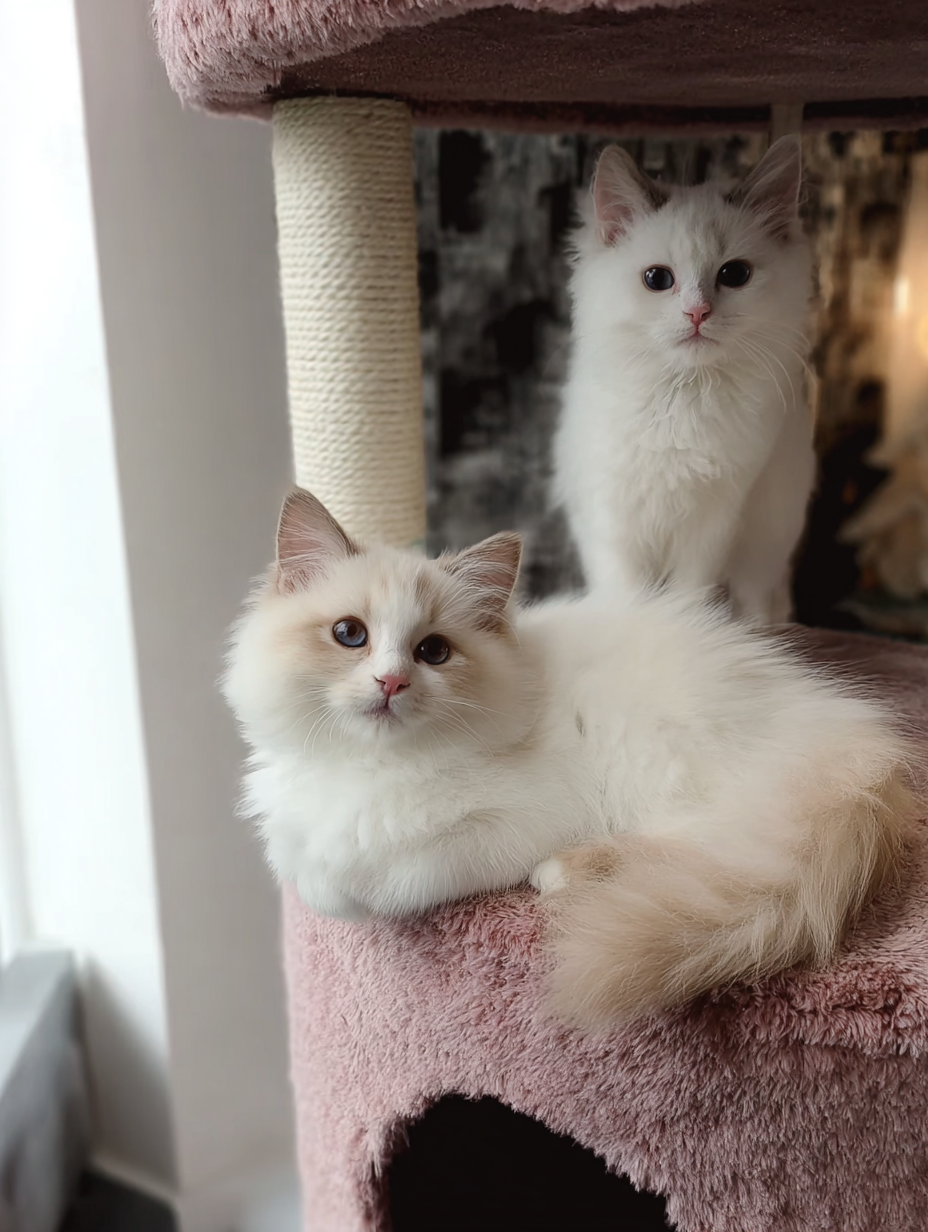
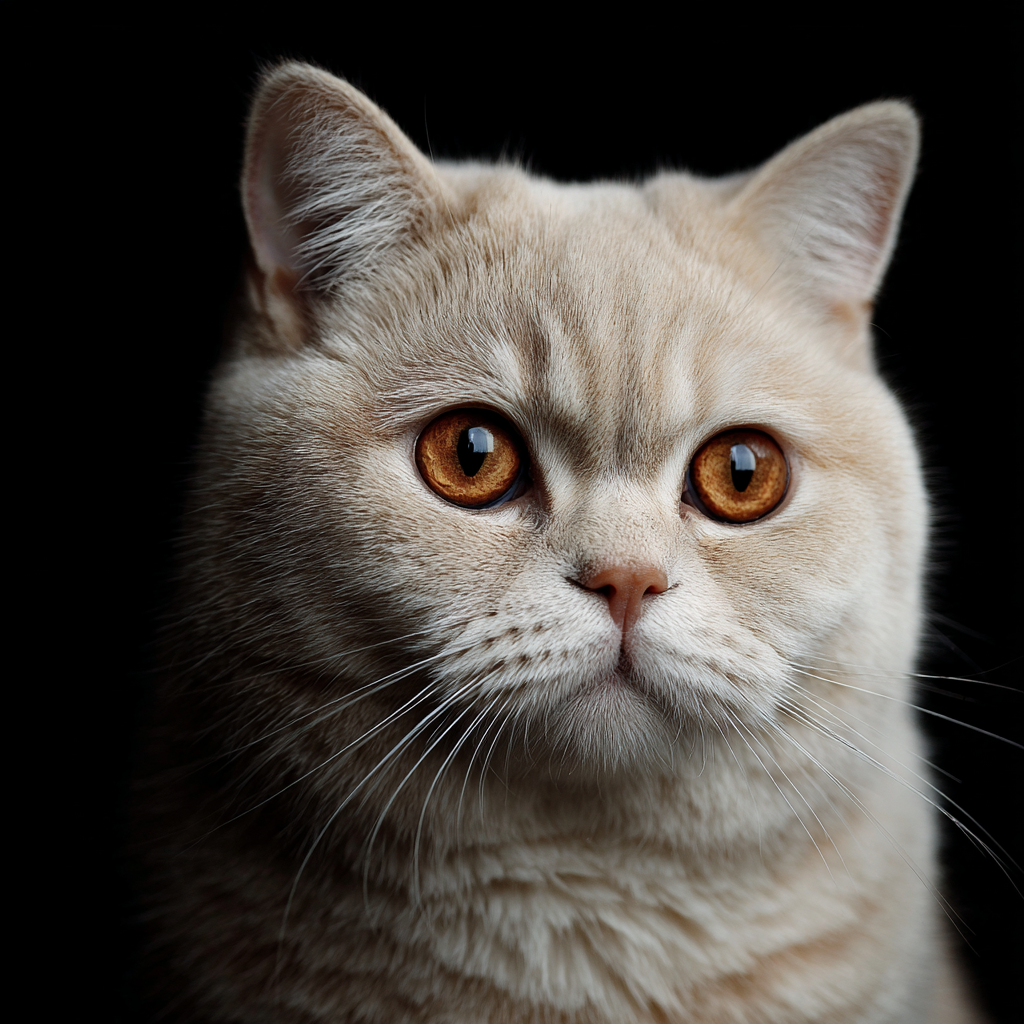
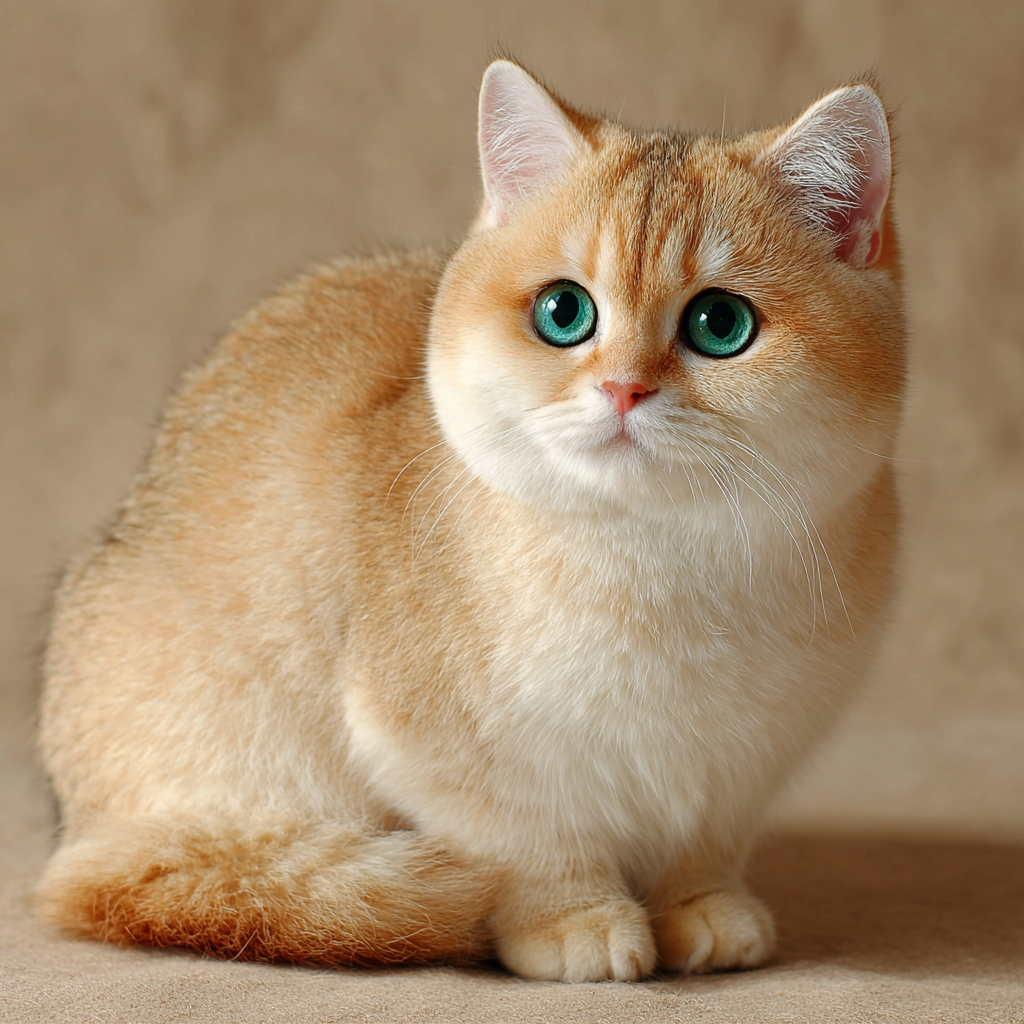
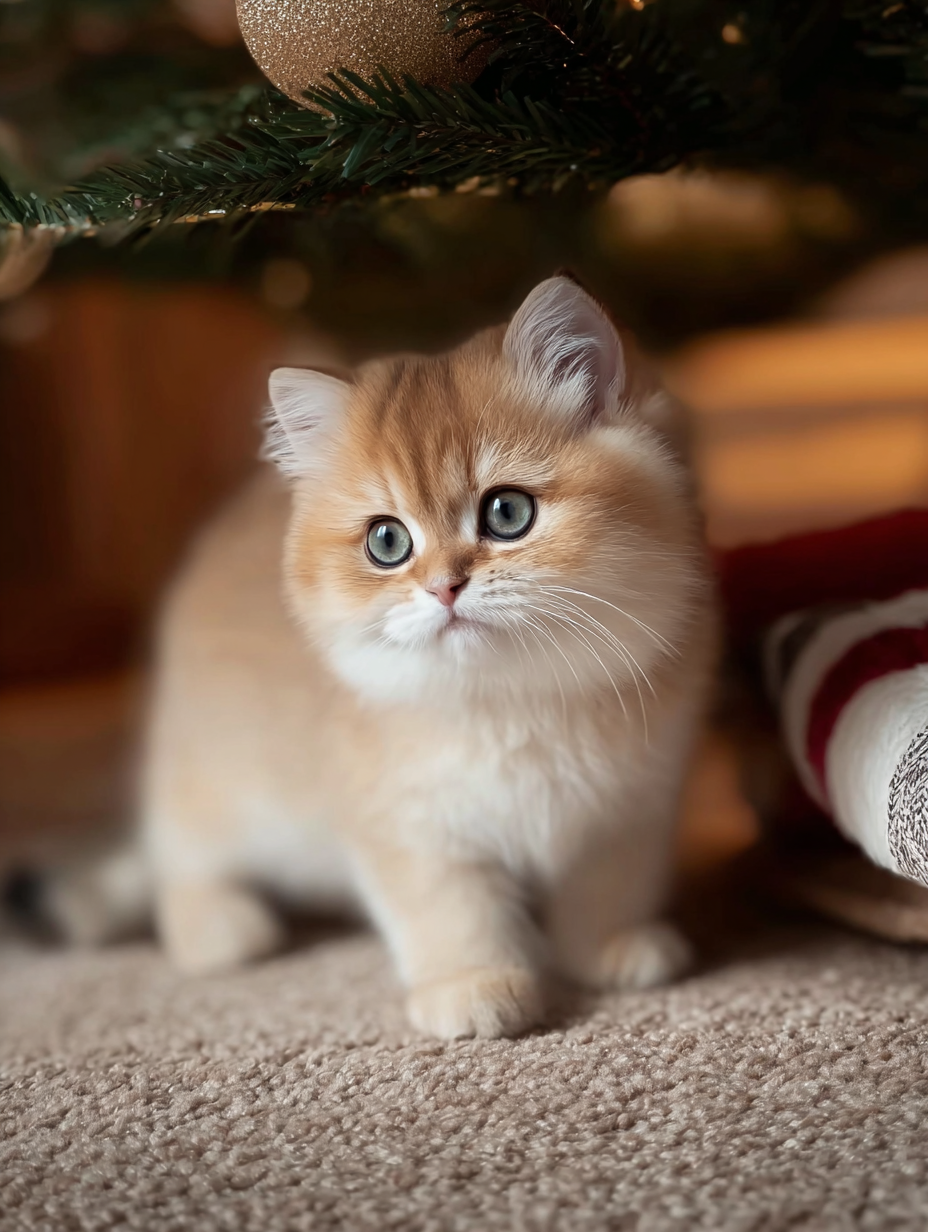
Read the Comments +